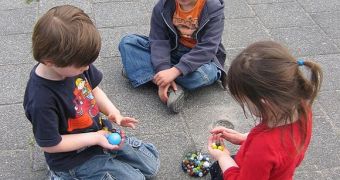British researchers from the University of Leeds have recently determined that people who tend to act as leaders of their groups do not necessarily appear in the center of the crowd. Rather, they remain at the fringes, exerting different traits. The team says that some of the most important characteristics leaders must display include decisive behavior and acting faster than most people in their vicinity. Additionally, would-be leaders were discovered to spend less time listening to the advices of others, AlphaGalileo reports.
The new work was conducted by investigators at the UL Faculty of Biological Sciences, who devised a series of experiments to gage how crowds tend to self-organize and how leaders emerge. “It was interesting to find that the most effective leaders remained on the edges of the group and attempted to lead from the front. You’d think leaders in the center of the group should interact more often with others and therefore be more effective but here this wasn’t the case,” explains Leeds scientist Jolyon Faria, who was the lead researcher on the investigation. The expert conducted the work as part of his PhD study.
This line of investigations, he adds, is of great importance for crowd studies. When large groups of people come together to form a mass, a host of events take place, changing the way these individuals would normally act. This has important consequences, for example, on the way humans manage their physical environment. “For instance, a better understanding of human crowd behavior can help us design buildings more effectively for evacuation scenarios. It can also inform strategies for moving large numbers of people, useful for events where large crowds need to be moved as quickly and efficiently as possible by a relatively small number of event staff,” Faria adds further.
“We wanted to find out how people decided who to follow. We found that people were able to identify their leader by what position the leader takes, which goes some way to explain how animals in groups – such as birds and fish – can be led by only a small minority, even when leaders don’t signal their identity. Our findings have illustrated a general principle behind group behavior. These can also be applied to animal groups, something which could help in the management of the natural environment, as well as in the management of the urban environment,” the expert concludes. The investigation was conducted using money secured from the Biotechnology and Biological Sciences Research Council (BBSRC).

 14 DAY TRIAL //
14 DAY TRIAL //